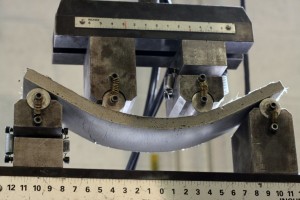Yoga for Wind Turbine Towers

The University of Michigan Investigates a Super-Ductile Concrete That May Make Wind Turbine Towers Taller, More Flexible

What’s the ideal concrete for wind turbine towers? One that is bendable, has 200 times the ductility and double the fatigue resistance of normal concrete, is 30% lighter, and has self-healing abilities. That is what the University of Michigan, with assistance from EPRI, is developing, and it may result in taller turbines and reduced maintenance costs. Because wind speed increases with height, taller turbines can have more output.
Conventional concrete cracks when bent or strained excessively, limiting the height of wind turbines. Incorporating certain chopped fibers into concrete might dramatically increase ductility and amplify its ability to heal small cracks via chemical reactions at the cracked surfaces. Self-healing can be particularly important in marine regions, where salty air can cause cracks in concrete.
The proposed mixture includes polypropylene fibers, fly ash, and low-density aggregates. In 2016, researchers plan to evaluate its self-healing ability in salty conditions and test its ductility and durability as it is bent. The results are expected to lead to improvements in the mixture.
Other possible power industry applications include hydropower dams and power plant cooling towers and stacks.

